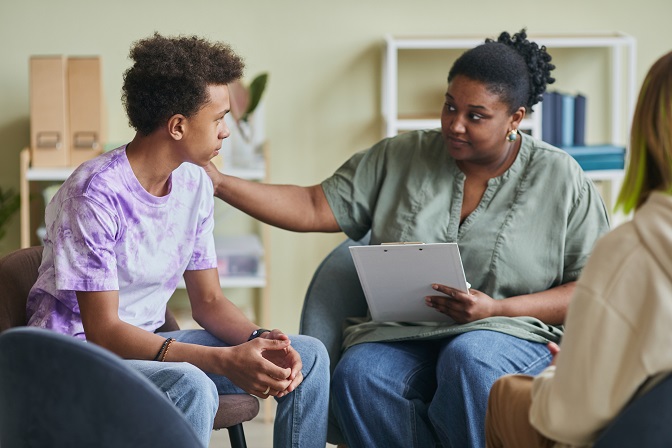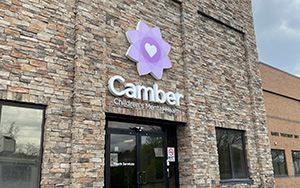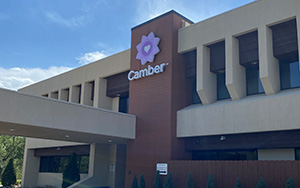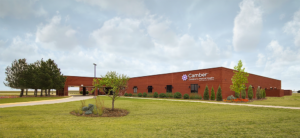A Guide to Recognizing and Addressing PTSD in Children and Teens

Children are resilient. They can endure difficult experiences and still have opportunities to overcome adversity and thrive with the right support and resources in place. Traumatic experiences and severe stressors leave their mark on youth and can manifest themselves in the form of mental health conditions, including anxiety, depression and post-traumatic stress disorder (PTSD). While PTSD can be challenging to diagnose, it’s important to recognize PTSD symptoms so that they can be properly addressed and healing can occur. Let’s take a look at what childhood PTSD is, what the symptoms are and how hope can be found through treatment.
What is PTSD?
PTSD stands for post-traumatic stress disorder, which is a characterization of our body’s response to a traumatic event that was either experienced or witnessed.
“Most of us have experienced a traumatic event throughout our lifetime,” explains Brittany Broeckelman, LSCSW, Vice President of Clinical Services with Camber Children’s Mental Health. “Typically, our bodies go into a hyper-arousal state of fight or flight, which is a normal response. But when our bodies get stuck in this state or if the symptoms don’t improve within a month, then PTSD is a likely diagnosis.”
Many of us think of a soldier or war veteran when we think of PTSD. And it’s important to know that this condition can affect anyone at any stage of life, including children. About 5-8% of all children struggle with PTSD, and females tend to rank at the higher end of that spectrum.
What Can Cause PTSD?
Research indicates that more than two-thirds of children in the United States report experiencing at least one traumatic event by the age of 16, and many have experienced more than that. Traumatic experiences look different for everyone, and what causes a PTSD response in one person may not affect another person to the same degree. A few common traumatic experiences that might lead to PTSD include:
- Natural disasters
- Mass shootings and other large-scale tragedies
- Witnessing death, especially the death of someone close to you
- Having a chronic medical condition, medical emergency or serious accident
- Witnessing or experiencing mental, physical, sexual or psychological abuse or neglect
- Having a guardian with an untreated mental health condition, such as substance use disorder
Signs and Symptoms of PTSD
 The impacts of trauma can manifest themselves in many ways. One common indicator is experiencing flashbacks, including reliving the traumatic event or having physical symptoms like a racing heart or sweating. Other people may have distressing thoughts, including anxiety that the traumatic event may repeat itself. Disassociation, which often looks like disengagement or a “blank” response, is also a common PTSD symptom.
The impacts of trauma can manifest themselves in many ways. One common indicator is experiencing flashbacks, including reliving the traumatic event or having physical symptoms like a racing heart or sweating. Other people may have distressing thoughts, including anxiety that the traumatic event may repeat itself. Disassociation, which often looks like disengagement or a “blank” response, is also a common PTSD symptom.
In addition to the above, children specifically might exhibit PTSD in unique ways, including reenacting their traumatic events through play. They may also discuss dreams or nightmares about the trauma. Another common symptom is avoidance. “This is the biggest symptom we see in children with PTSD,” Broeckelman says, “including becoming avoidant of people, places, things, thoughts or feelings that remind the child about their experience.” For example, if a child was at school when a traumatic experience occurred, they may become very avoidant of going to school and frequently look for excuses to ask to stay home. Learn about more signs and symptoms of PTSD.
Common PTSD Misdiagnoses
Often, a child receives a mental health diagnosis, but PTSD is missed or is found alongside other conditions. For example, attention deficit hyperactivity disorder (ADHD) is a common misdiagnosis. “We often see children, especially younger children, diagnosed with ADHD when they actually have PTSD,” Broeckelman says, “and that’s because they share many of the same symptoms.” PTSD can be tricky to diagnose since trauma can present with several symptoms.
Common diagnoses that might have a missing PTSD connection include:
- Generalized anxiety disorder
- Depressive disorders
- ADHD (Attention Deficit Hyperactivity Disorder)
- Dissociative disorders
What is Complex PTSD and How Does it Differ from General PTSD?
Complex PTSD happens with prolonged exposure to traumatic situations or abuse. Because of the chronic exposure, symptoms of Complex PTSD can appear to be more severe than generalized PTSD. Without treatment, the symptoms of Complex PTSD can begin to affect:
- Normal development
- Emotional regulation
- The ability to form healthy relationships
- Personal identity and sense of self
- Other behavioral issues
Finding Hope Through Treatment at Camber
 Living with PTSD or watching someone else struggle with symptoms can be difficult, especially when you feel helpless. However, there is hope that real improvement is possible with professional treatment. Outpatient support from a counselor or licensed therapist can help with a range of conditions and varying levels of symptom severity. If you’re concerned about a child, you could start your search for help by talking to a school counselor, their primary physician or a community mental health center.
Living with PTSD or watching someone else struggle with symptoms can be difficult, especially when you feel helpless. However, there is hope that real improvement is possible with professional treatment. Outpatient support from a counselor or licensed therapist can help with a range of conditions and varying levels of symptom severity. If you’re concerned about a child, you could start your search for help by talking to a school counselor, their primary physician or a community mental health center.
Camber Children’s Mental Health specializes in treating youth in need of more intensive treatment who are experiencing very severe, acute symptoms putting their safety or the safety of others at risk. Camber provides this care through two types of services – inpatient hospitalization and residential treatment. If you think a child in your care is in a state where their safety is at risk, call Camber 24/7 at (913) 890-7468 to speak with our highly trained admissions department or complete this form and they will follow up with you soon. They will answer any questions you have about Camber’s services as well as guide you on local resources that can support you.
PTSD in Children: Upcoming Webinar Series Offering Free CEUs
For children with a PTSD diagnosis, a specific event or series of events has triggered distressing symptoms. Children can have a very difficult time opening up and talking about traumatic experiences, so a professional who is highly skilled in caring for children and families can be transformational in their lives.
For community professionals serving children and families who are looking for more information and a deeper understanding of childhood PTSD, Camber is hosting a free webinar series this April. The series is broken down into two segments:
- First Session: The first webinar of the series will focus on the assessment and diagnosis of PTSD in youth. This session will break down the DSM-5 diagnostic criteria for PTSD including risk factors and symptoms as well as review the assessment process in greater detail and explore common misdiagnoses.
- Second Session: The second webinar will cover the intervention and treatment modalities proven to help youth with PTSD and share practical strategies you can implement to reestablish feelings of safety and security. A case study will also be shared to give participants a glimpse into Camber’s unique approach to treatment and the benefits of integration modalities.
*Participants can earn 1.5 CEUs per session.
Join Camber’s mental health experts for this opportunity to expand your skill set in treating childhood PTSD and supporting the wellbeing of youth under your care while receiving free continuing education units (CEUs) for your licensure. Register for Camber’s free PTSD webinar series to save your spot.





